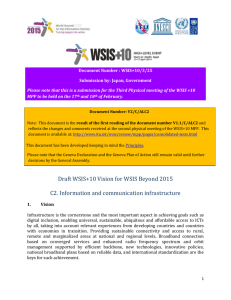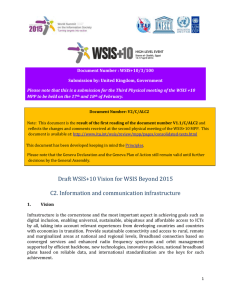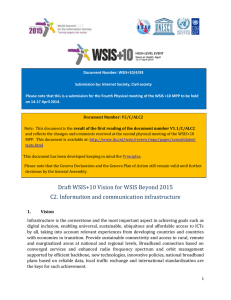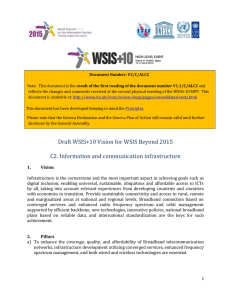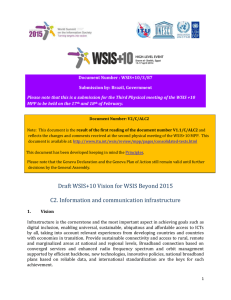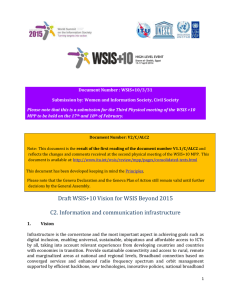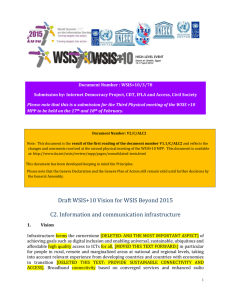000251658240
advertisement
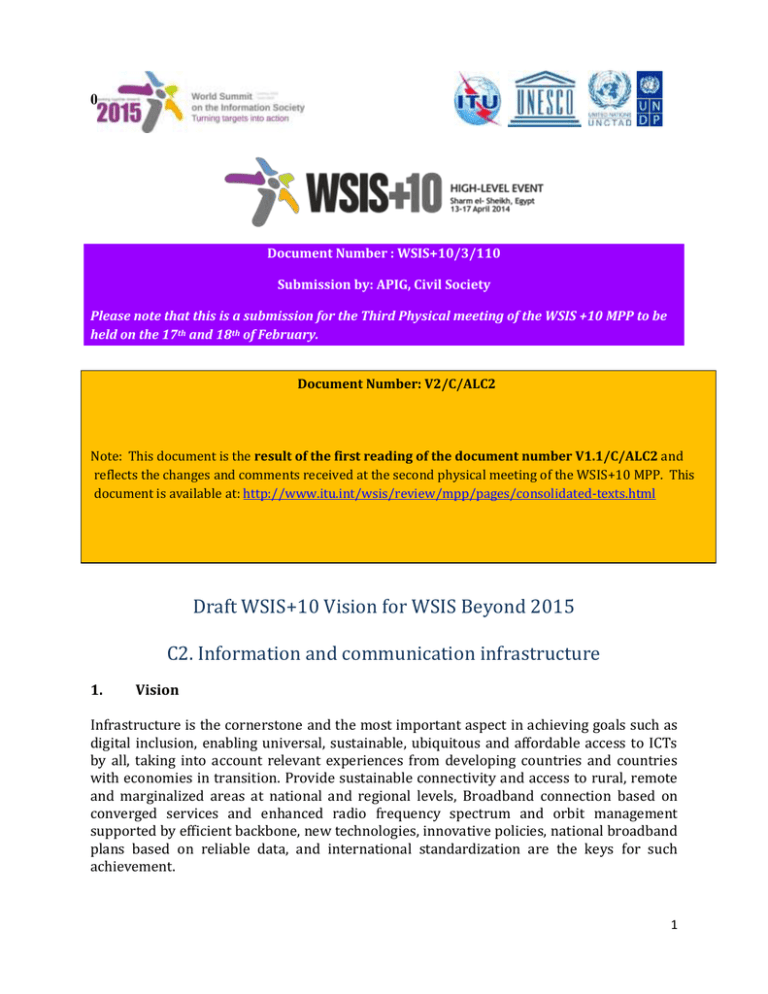
000251658240 Document Number : WSIS+10/3/110 Submission by: APIG, Civil Society Please note that this is a submission for the Third Physical meeting of the WSIS +10 MPP to be held on the 17th and 18th of February. Document Number: V2/C/ALC2 Note: This document is the result of the first reading of the document number V1.1/C/ALC2 and reflects the changes and comments received at the second physical meeting of the WSIS+10 MPP. This document is available at: http://www.itu.int/wsis/review/mpp/pages/consolidated-texts.html This document has been developed keeping in mind the Principles. Please note that the Geneva DeclarationVision and the Geneva Plan ofBeyond Action still 2015 remain valid until further Draft WSIS+10 for WSIS decisions by the General Assembly. С2. Information and communication infrastructure 1. Vision Infrastructure is the cornerstone and the most important aspect in achieving goals such as digital inclusion, enabling universal, sustainable, ubiquitous and affordable access to ICTs by all, taking into account relevant experiences from developing countries and countries with economies in transition. Provide sustainable connectivity and access to rural, remote and marginalized areas at national and regional levels, Broadband connection based on converged services and enhanced radio frequency spectrum and orbit management supported by efficient backbone, new technologies, innovative policies, national broadband plans based on reliable data, and international standardization are the keys for such achievement. 1 2. Pillars a) To enhance the coverage, quality, and affordability of Broadband telecommunication networks, infrastructure development utilizing converged services, enhanced frequency spectrum management, and both wired and wireless technologies are essential. b) Develop a well-planned, well-maintained, robust, economic, and efficient Broadband infrastructure to ensure the delivery of high quality services including, Internet and access to affordable information and technologies for citizens. c) Increase research and development, and deployment of new technologies, to provide reliable and affordable information and communication infrastructure. d) Utilize policy and financing mechanisms such as Universal Service Funds and/or Public Private Partnership, to connect and cover rural and remote areas with affordable Broadband information and communication infrastructure. e) To attract private investment, competition and market liberalization policies, financing, and new business models need to be studied and deployed. f) Policies, technologies, and actions, such as connecting public facilities and encouraging the usage of multi-/sign- language, need to be considered to ensure minorities, disadvantaged, aged, and persons with impairments are connected to Broadband telecommunication networks, bearing in mind that market solutions may not always result in the rollout of sufficient infrastructure. g) Planning and actions based on proper and reliable data related to information and communication infrastructure are essential, keeing in mind the protection of privacy . h) To develop affordable network/consumer telecommunications equipment, access and services by economy of scale, development, and conformity and interoperability, by international standards are key elements. Affordable should be understood in relation to the user’s disposable income. i) Emergency telecommunication services should be secured. j) Identify the main difficulties that the digital economy poses for the application of existing international tax rules and develop detailed options to address these difficulties. k) 3. Targets [Access to Broadband telecommunication networks, and the gaps i. By 2020, XX % of households should have Internet access (World, developing countries) 2 ii. By 2020, Internet user penetration should reach YY% (World, developing countries)] 3
